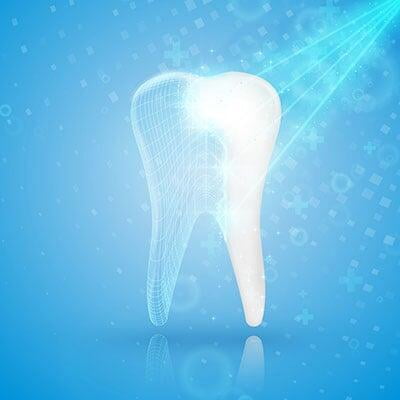
Would you be surprised to learn that many traditional dental tools haven’t changed all that much since their invention back in the 1800s? It’s true! But one of the big exceptions is the dental laser. We’ve written about the CO2 and before, both of which have unique uses and No matter which you’re considering, dental lasers in general share the same primary advantages. diode lasers before, both of which have unique uses and applications. No matter which you’re considering, dental lasers in general share the same primary advantages. before, both of which have unique uses and Here are three ways a laser benefits a dental practice. No matter which you’re considering, dental lasers in general share the same primary advantages. Here are three ways a laser benefits a dental practice.
Greater Efficiency
Traditional dental tools have their drawbacks, largely related to anesthesia and bleeding. Dental practitioners must spend time administering the first and controlling the latter, which limits efficiency. They avoid the negative effects of anesthesia—think patient anxiety, post-operative discomfort, and the time constraints as both patient and practitioner wait for numbness to set it. Plus, there’s little to no bleeding to manage.As tools that make anesthesia-free procedures possible, dental lasers neatly solve these challenges. They avoid the negative effects of anesthesia—think patient anxiety, post-operative discomfort, and the time constraints as both patient and practitioner wait for numbness to set it. Plus, there’s little to no bleeding to manage. They avoid the negative effects of anesthesia—think patient anxiety, post-operative discomfort, and the time constraints as both patient and practitioner wait for numbness to set it. Plus, there’s little to no bleeding to manage.
For the hygiene department in particular, the greater efficiency of the dental laser makes it possible for practitioners to complete more procedures. If your office, like many, is charging for procedures such as laser bacterial reduction and laser-assisted periodontal therapy, that’s a revenue increase of anywhere from $20,000 to $80,000 annually.If your office, like many, is charging for procedures such as laser bacterial reduction and laser-assisted periodontal therapy, that’s a revenue increase of anywhere from $20,000 to $80,000 annually.If your office, like many, is charging for procedures such as laser bacterial reduction and laser-assisted periodontal therapy, that’s a revenue increase of anywhere from $20,000 to $80,000 annually.
Dentists benefit from this increased efficiency as well. And more efficiency means more patients, which also means boosted revenue.
Improved Patient and Clinician Experience
Research has shown that many American avoid the dentist, citing the sounds, smells, and sensations associated with traditional dental tools. has shown that many American avoid the dentist, citing the sounds, smells, and sensations associated with traditional dental tools. But all of this negative stimuli is eliminated with the dental laser, which means a vastly improved patient experience. But all of this negative stimuli is eliminated with the dental laser, which means a vastly improved patient experience.
A calmer patient benefits the dental practitioner too. Instead of spending time trying to calm an overly anxious patient, the dentist or RDH can focus on their work. Plus, that sort of positive experience tends to mean a greater likelihood of referrals.Calmer patients contribute to calmer, quieter, more pleasant dental environments, which benefits everyone in that setting. Plus, that sort of positive experience tends to mean a greater likelihood of referrals. Plus, that sort of positive experience tends to mean a greater likelihood of referrals.
Improved Patient Outcomes
One of the biggest benefits of the dental laser is that it makes many routine dental procedures faster, less painful, and generally more effective. The pinpoint accuracy of the laser also avoids damage to surrounding tissues.Lasers kill bacteria and promote blood clotting, making for cleaner sites and faster healing times. The pinpoint accuracy of the laser also avoids damage to surrounding tissues. The pinpoint accuracy of the laser also avoids damage to surrounding tissues.
The Takeaway
If your dental practice is still considering adding a laser, it’s time to do so. It’s a tool that improves just about every component of dentistry. Plus, with here at Dedicated Dental Hygiene, you can be sure that everyone in your practice has the skills and knowledge to use it properly, per the regulations in your state. in-office training today to learn more about our training options for your practice.here at Dedicated Dental Hygiene, you can be sure that everyone in your practice has the skills and knowledge to use it properly, per the regulations in your state. Contact the DDH team today to learn more about our training options for your practice. Contact the DDH team today to learn more about our training options for your practice.
